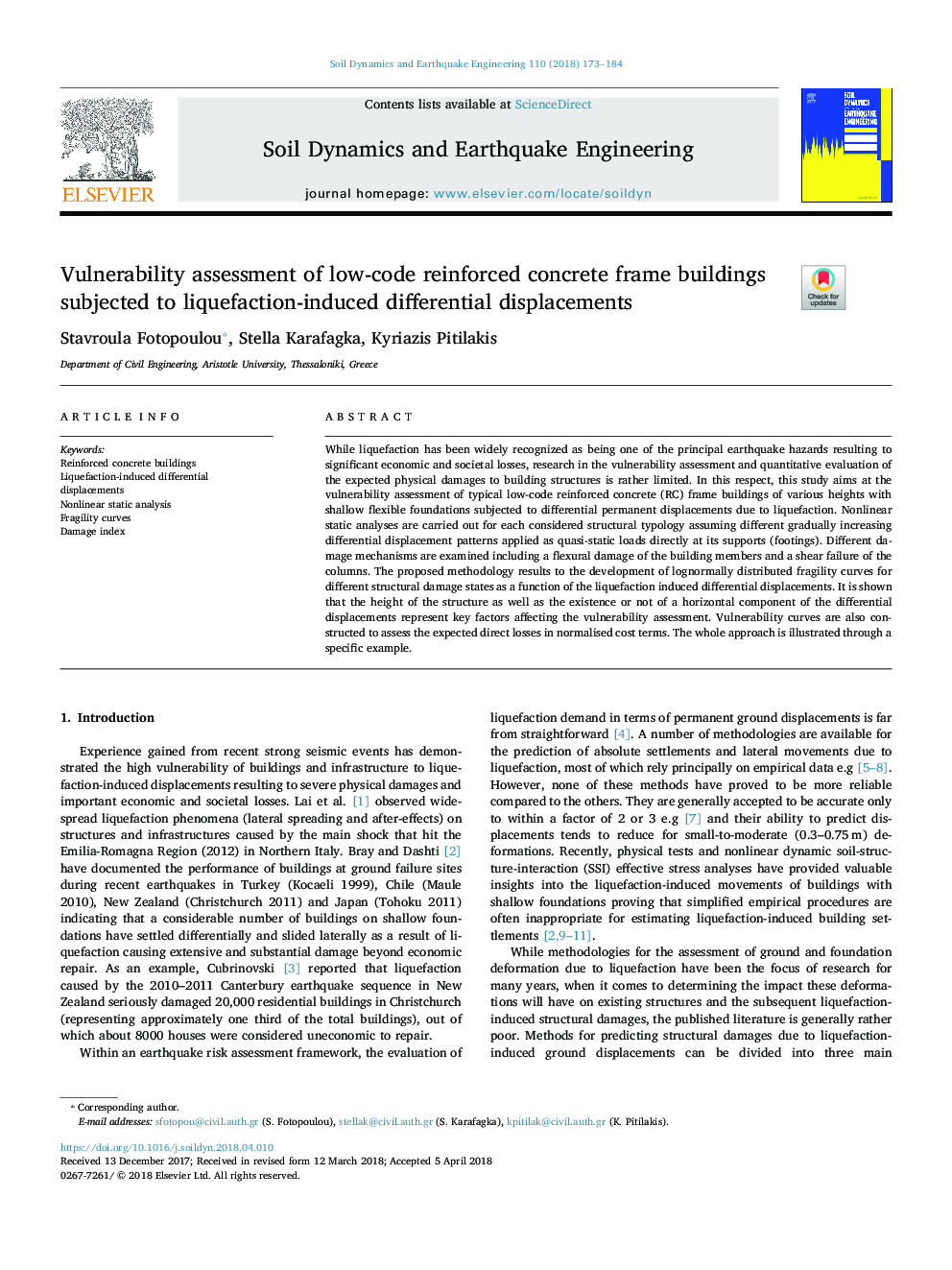| Article ID | Journal | Published Year | Pages | File Type |
|---|---|---|---|---|
| 6770391 | Soil Dynamics and Earthquake Engineering | 2018 | 12 Pages |
Abstract
While liquefaction has been widely recognized as being one of the principal earthquake hazards resulting to significant economic and societal losses, research in the vulnerability assessment and quantitative evaluation of the expected physical damages to building structures is rather limited. In this respect, this study aims at the vulnerability assessment of typical low-code reinforced concrete (RC) frame buildings of various heights with shallow flexible foundations subjected to differential permanent displacements due to liquefaction. Nonlinear static analyses are carried out for each considered structural typology assuming different gradually increasing differential displacement patterns applied as quasi-static loads directly at its supports (footings). Different damage mechanisms are examined including a flexural damage of the building members and a shear failure of the columns. The proposed methodology results to the development of lognormally distributed fragility curves for different structural damage states as a function of the liquefaction induced differential displacements. It is shown that the height of the structure as well as the existence or not of a horizontal component of the differential displacements represent key factors affecting the vulnerability assessment. Vulnerability curves are also constructed to assess the expected direct losses in normalised cost terms. The whole approach is illustrated through a specific example.
Related Topics
Physical Sciences and Engineering
Earth and Planetary Sciences
Geotechnical Engineering and Engineering Geology
Authors
Stavroula Fotopoulou, Stella Karafagka, Kyriazis Pitilakis,
